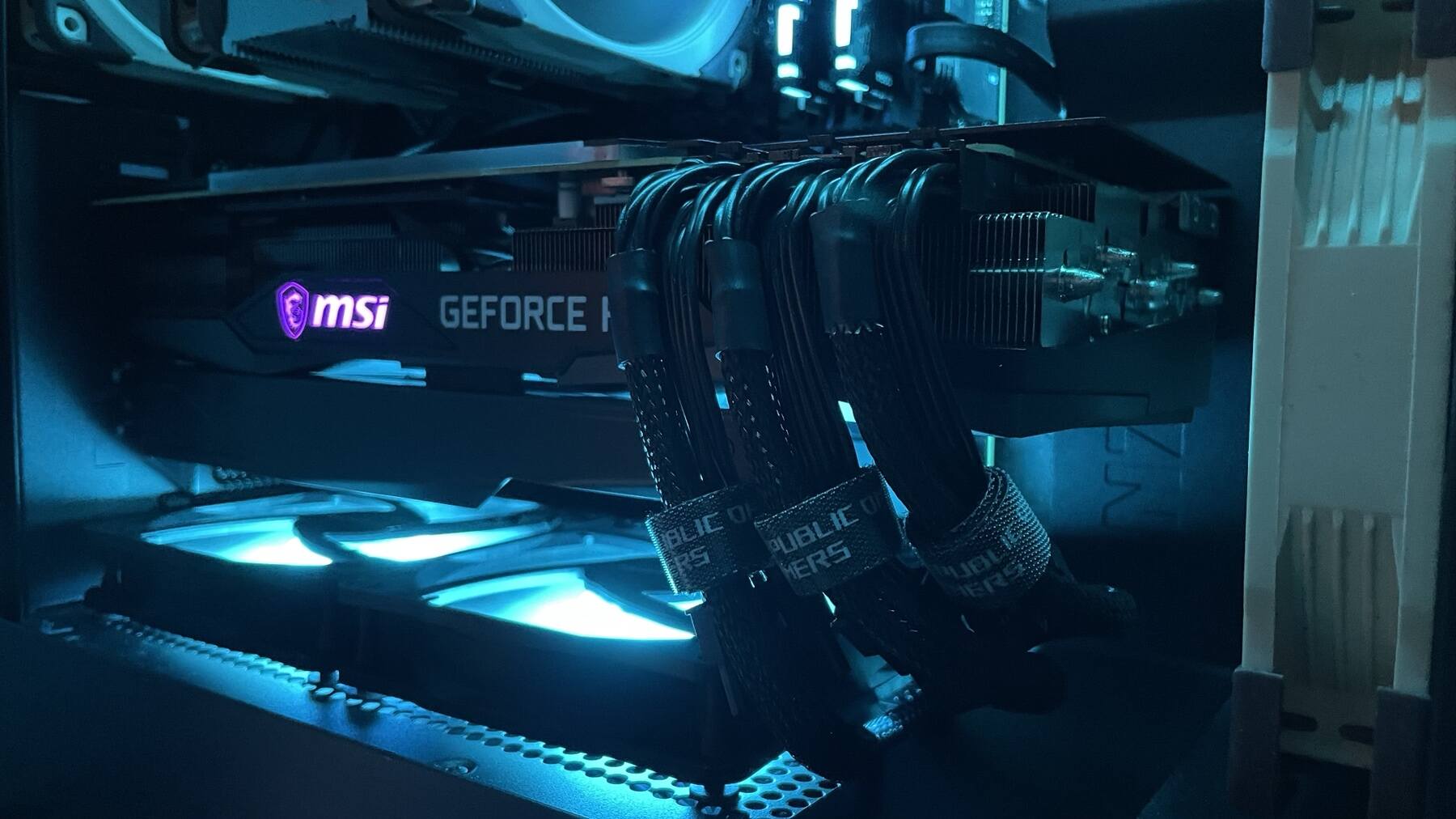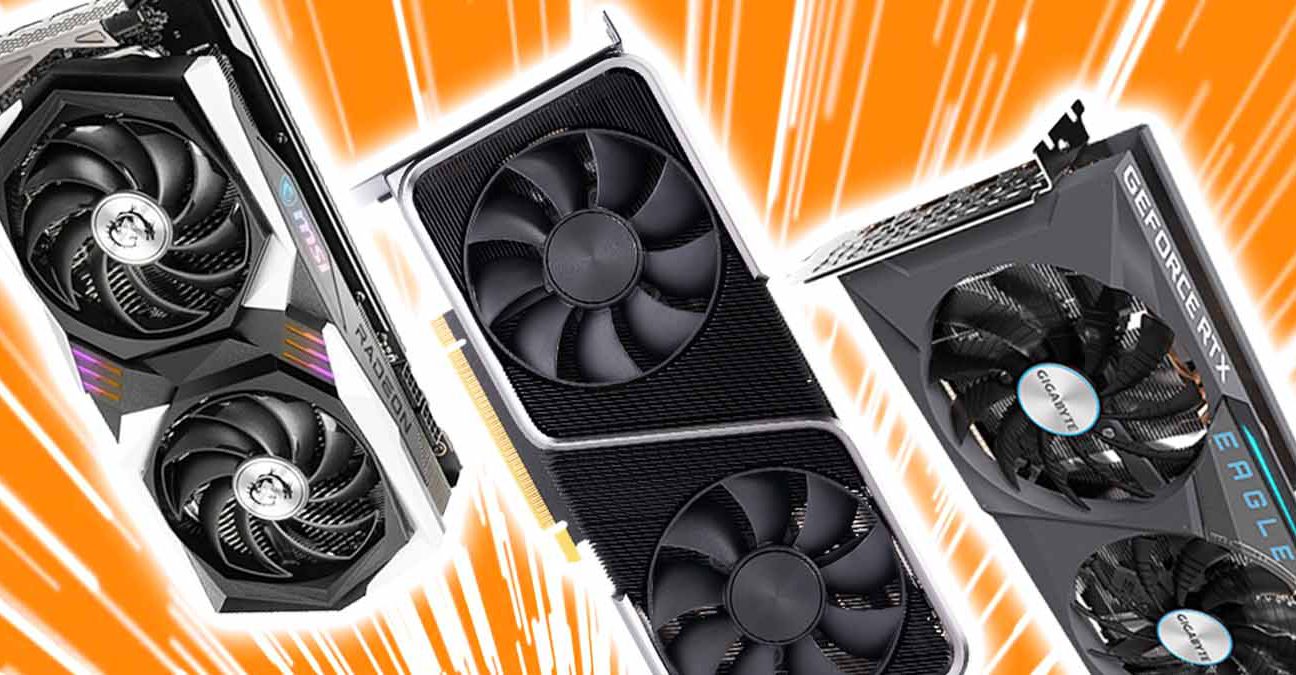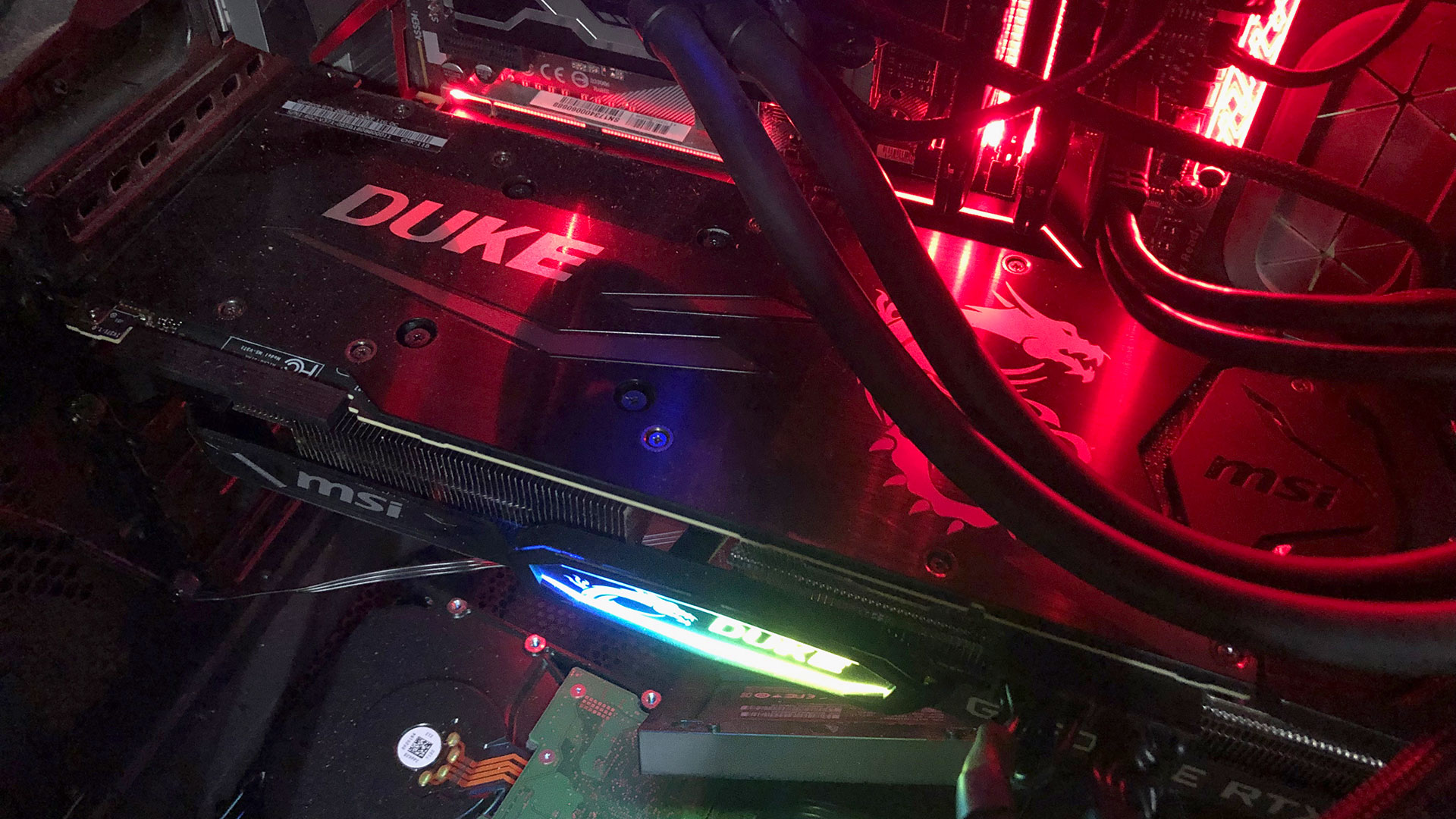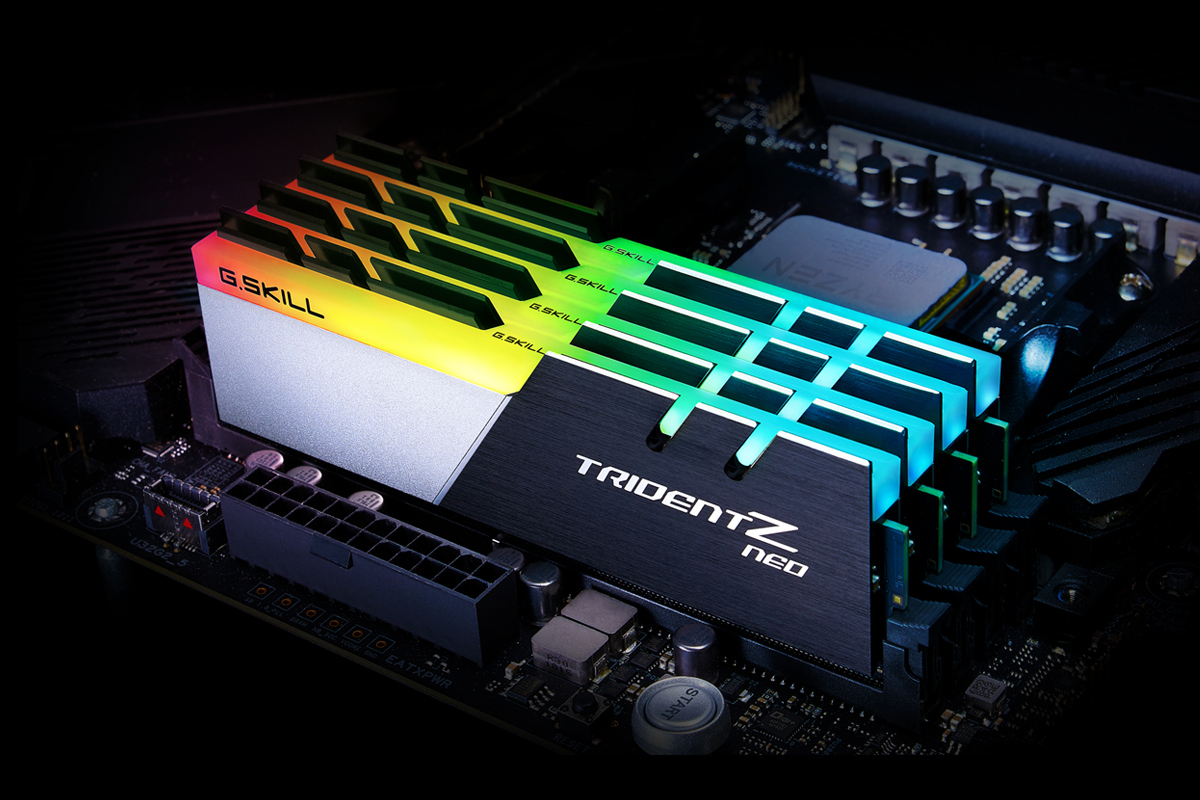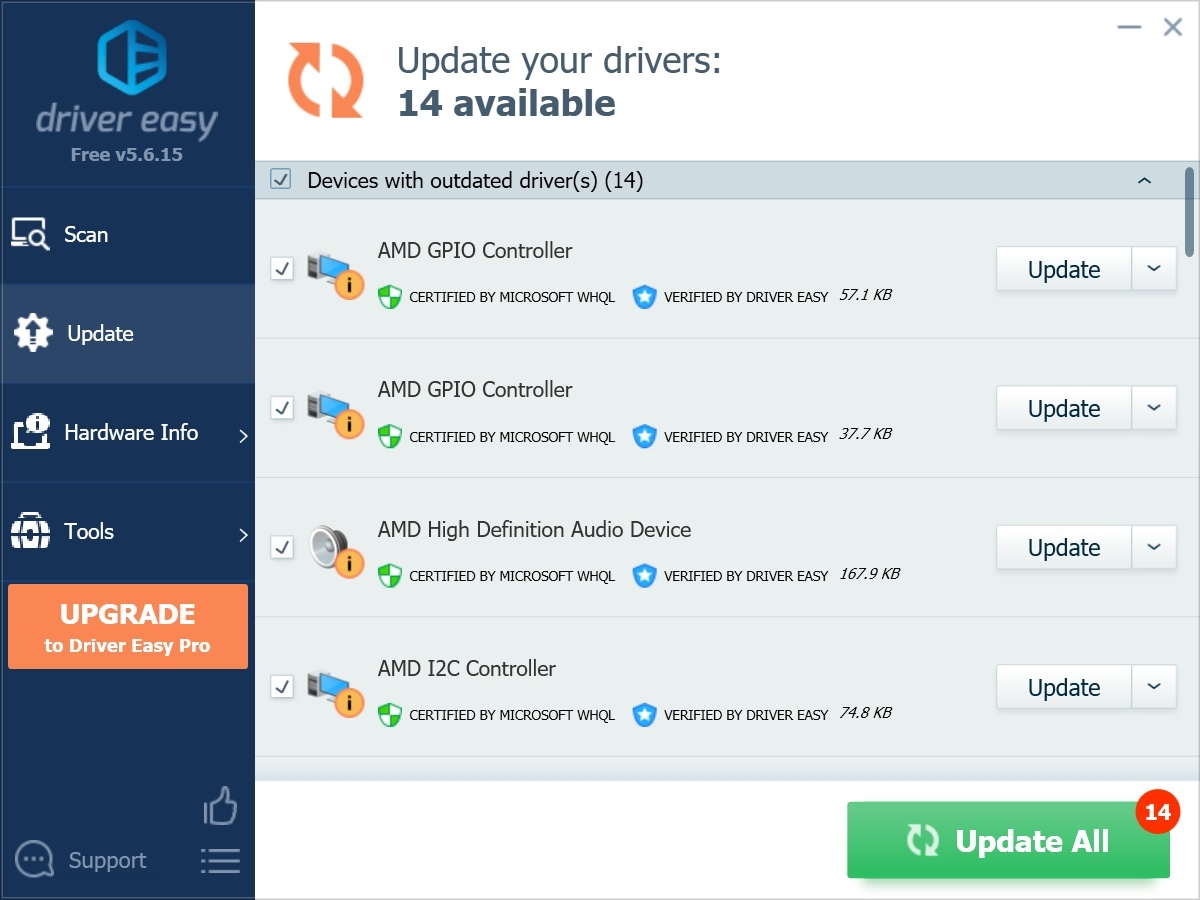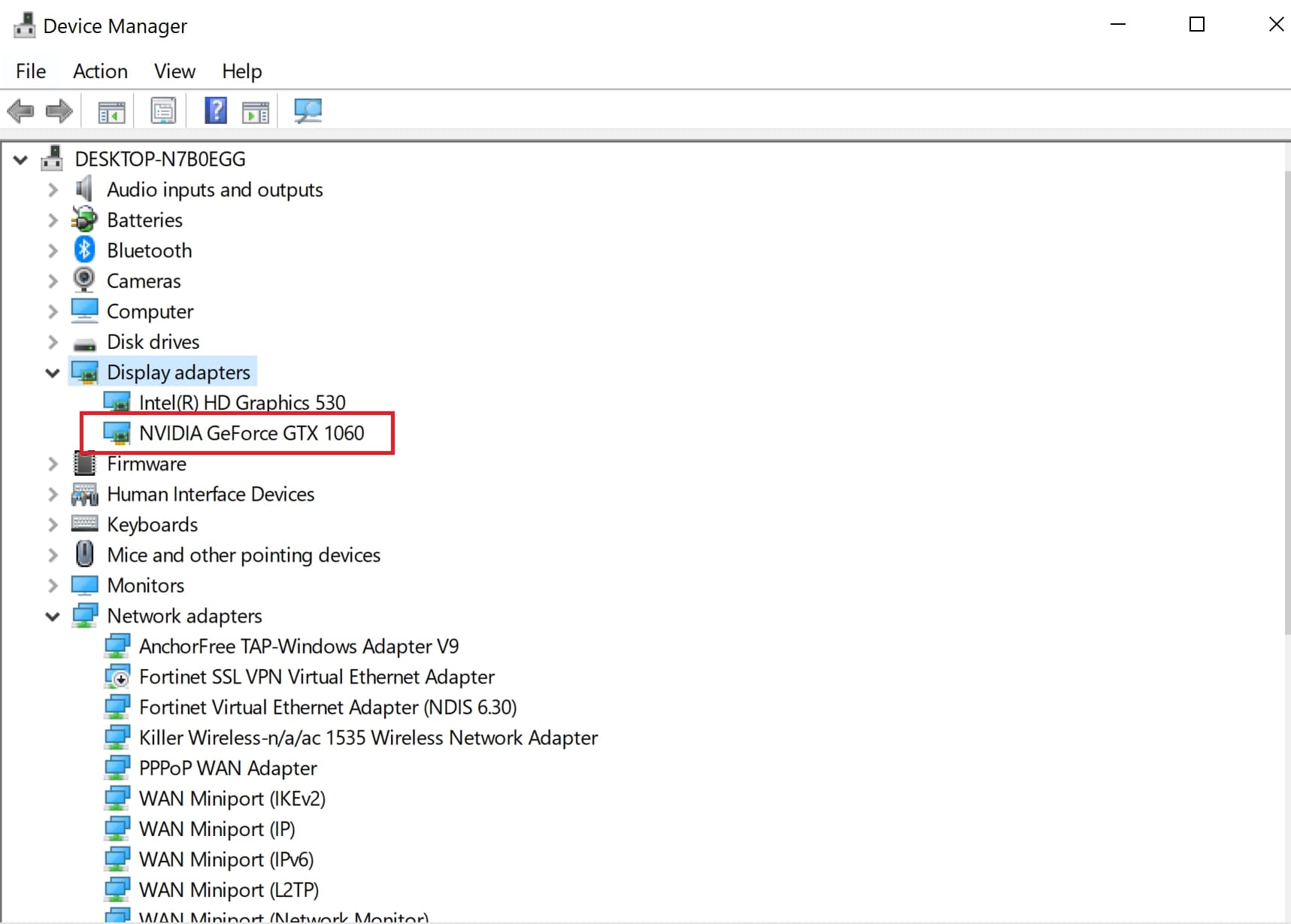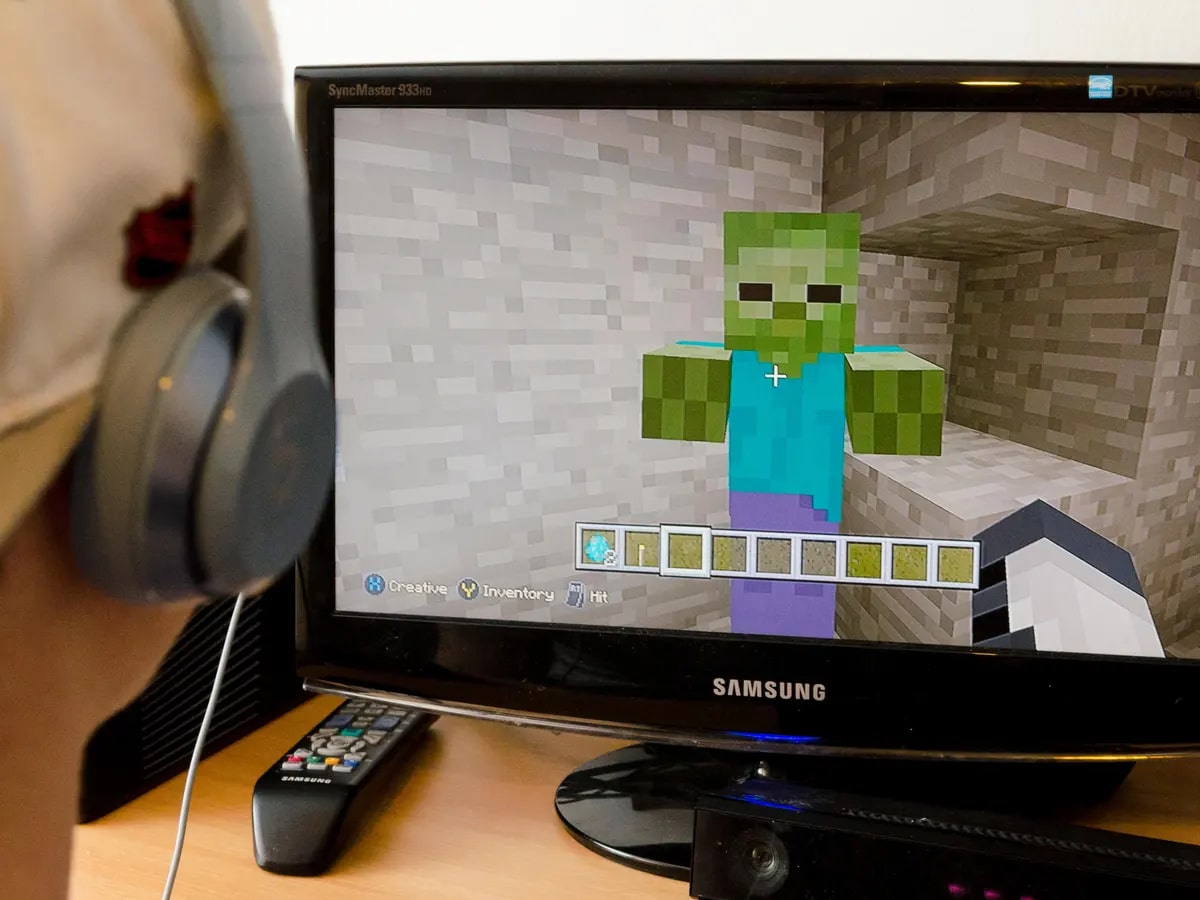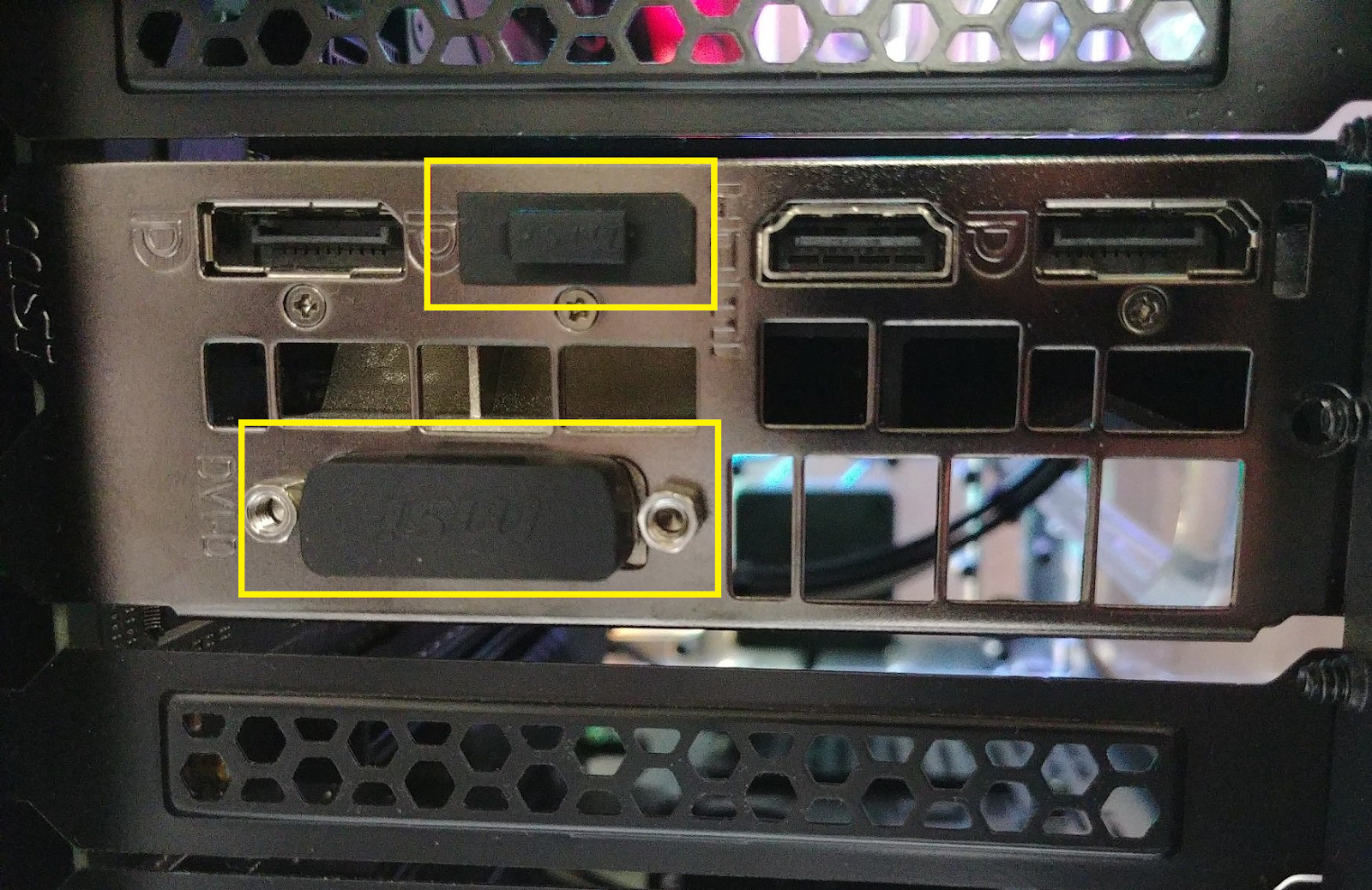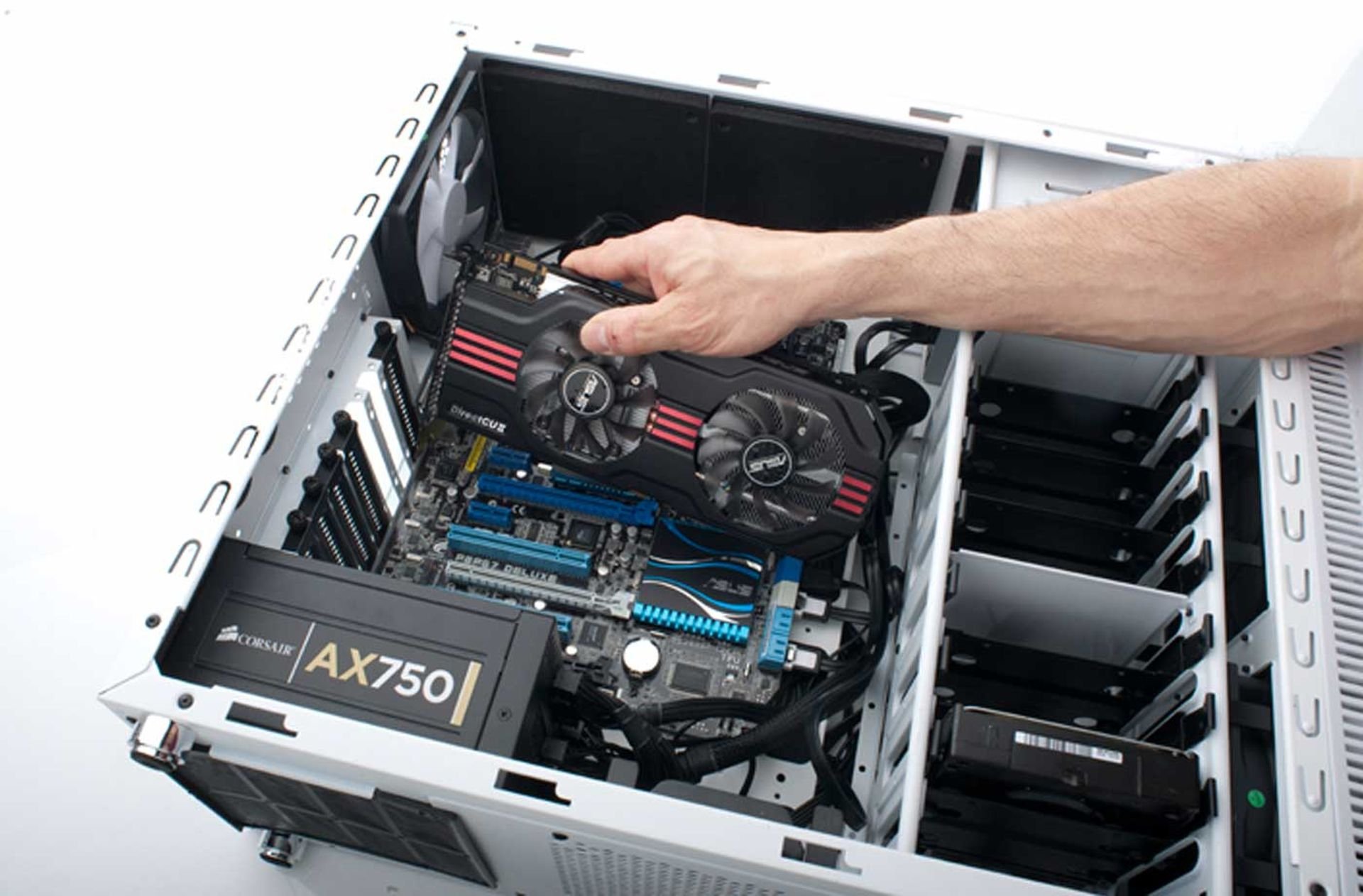Introduction
Welcome to the world of graphics cards! Whether you’re a seasoned gamer or a casual computer user, having a powerful graphics card can greatly enhance your visual experience. A graphics card, also known as a video card or GPU (Graphics Processing Unit), is responsible for rendering images, videos, and animations on your computer screen. It plays a crucial role in displaying high-resolution graphics, realistic gaming environments, and smooth video playback.
Understanding how to get the most out of your graphics card can have a significant impact on your overall computing experience. From selecting the right card to optimizing settings and keeping it cool, there are several key steps you can take to ensure optimal performance and longevity. In this article, we will guide you through the process of maximizing your graphics card’s potential and getting the best visual performance out of your system.
Whether you’re using your computer for gaming, graphic design, video editing, or even just everyday tasks like watching movies or browsing the internet, a powerful graphics card can make a noticeable difference in image quality, fluidity, and responsiveness. However, to fully harness its power, you need to know the basics and make informed decisions when it comes to your graphics card setup.
Throughout this article, we will provide you with practical tips and insights on how to choose the right graphics card for your needs, install the latest drivers, optimize graphics settings, consider overclocking, and ensure proper cooling for your card. We will also discuss when it might be time to upgrade or replace your graphics card to keep up with advancing technologies and evolving software requirements.
So, whether you’re a gaming enthusiast looking to push the boundaries of visual fidelity or a professional designer seeking the best possible image quality, buckle up and get ready to unlock the full potential of your graphics card!
Understand the Basics
Before diving into the world of graphics cards, it’s essential to understand the fundamental concepts and terminology associated with them. This knowledge will help you make informed decisions when it comes to choosing and optimizing your graphics card.
One of the most critical aspects to understand is the concept of GPU, or Graphics Processing Unit. The GPU is the heart of your graphics card, responsible for processing and rendering complex graphics. It determines the card’s overall performance and capabilities. Graphics cards come in various GPU models, each offering different specifications and performance levels.
Another key factor to consider is VRAM, or Video Random Access Memory. Just like your computer’s RAM, VRAM is dedicated memory used specifically for storing and accessing graphic data. The amount of VRAM directly impacts the card’s ability to handle high-resolution textures and complex graphical calculations. When choosing a graphics card, ensure it has enough VRAM to support your intended usage, such as gaming, graphic design, or video editing.
Next, you should consider the interface and compatibility of the graphics card with your computer. Most modern graphics cards utilize the PCI Express interface, which provides high-speed data transfer between the card and the motherboard. Ensure that your motherboard has the necessary PCIe slot and compatible version to accommodate the graphics card you choose.
Additionally, be aware of the power requirements of your chosen graphics card. High-performance cards often require additional power beyond what the PCIe slot can provide. Make sure your power supply has enough wattage and the necessary connectors to meet the card’s power requirements. Consult the graphics card manufacturer’s specifications or recommendations to ensure compatibility.
Lastly, take into account the physical dimensions of the graphics card. Some high-end models can be quite large and may not fit in all computer cases. Measure the available space in your case and compare it with the dimensions of the card to ensure a proper fit.
By understanding these fundamental concepts, you will be better equipped to choose a graphics card that meets your needs and is compatible with your system. Having a solid foundation of knowledge will enable you to make informed decisions throughout the rest of the process.
Choose the Right Graphics Card
When it comes to selecting a graphics card, finding the right one for your needs can seem like a daunting task. With so many options available, it’s essential to understand your requirements and consider various factors before making a decision.
First and foremost, determine the primary purpose of your graphics card. Are you a gamer looking to play the latest AAA titles at high settings? Or are you a content creator working with graphic-intensive applications? Knowing your intended usage will help narrow down your options and ensure that you choose a graphics card that can handle your specific needs.
Next, consider your budget. Graphics cards come in a wide range of prices, and it’s important to find a balance between performance and cost. Set a budget that you’re comfortable with and explore options within that price range. Keep in mind that higher-priced cards often offer better performance, but you don’t always need the top-of-the-line model to achieve satisfactory results.
It’s also crucial to research and compare the specifications of different graphics cards. Look for details such as GPU model, clock speed, memory size and type, and cooling capabilities. Compare benchmark scores and reviews to get an idea of each card’s performance in real-world scenarios. Websites and forums dedicated to PC gaming and hardware can provide valuable insights and user experiences to help you make an informed decision.
Compatibility with your existing system is another critical factor to consider. Ensure that the graphics card you choose is compatible with your motherboard’s PCIe slot and has the necessary power requirements. Measure the physical space available in your case to ensure that the card will fit without issues.
Furthermore, consider the future-proofing aspect. Technology advances quickly, and newer games and applications may demand more from your graphics card. While it’s not always possible to future-proof completely, choosing a graphics card with slightly higher specifications than your current needs can provide some longevity and ensure you’re not immediately outdated.
Lastly, take into account factors such as customer support, warranty, and after-sales service. It’s beneficial to purchase from reputable manufacturers known for their reliable products and excellent customer support. Investigate warranty terms and conditions to understand what is covered and for how long.
By considering these factors and doing thorough research, you can select the right graphics card that offers the right balance of performance, compatibility, and value for your specific needs and budget.
Install the Latest Drivers
Once you have your new graphics card in hand, it’s essential to install the latest drivers to ensure optimal performance and compatibility with your system. Drivers are software programs that enable communication between the graphics card hardware and your operating system. They play a vital role in maximizing the card’s capabilities and providing stability and compatibility with the latest games and applications.
Most graphics card manufacturers, such as NVIDIA and AMD, regularly release driver updates to address bugs, improve performance, and add new features. These updates often include optimizations specifically tailored for popular games and applications, ensuring that you get the best possible experience when using your card.
To install the latest drivers for your graphics card, start by identifying the manufacturer and model of your card. Visit the manufacturer’s website and navigate to the support or downloads section. Look for the drivers or driver update utility specific to your graphics card model and operating system.
Download the appropriate driver package and follow the installation instructions provided. This typically involves running the executable file and following the on-screen prompts. During the installation process, you may be required to restart your computer. Ensure that you save any unsaved work before proceeding.
It’s important to note that installing drivers from sources other than the official manufacturer’s website is not recommended. Third-party sources may provide outdated or modified drivers that could lead to compatibility issues or system instability. Always obtain drivers directly from the manufacturer to ensure authenticity and reliability.
Once the driver installation is complete, it’s a good practice to restart your computer even if you were not prompted to do so. This ensures that the new drivers are properly initialized and integrated into your system.
After restarting, verify that the driver installation was successful by checking the device manager or using the manufacturer’s software utility. These tools will display the installed driver version and provide options for further customization and optimization.
To keep your graphics card performing optimally, periodically check for driver updates. Most manufacturers provide notification systems or automatic update utilities that can simplify this process. Taking a few minutes to install these updates can greatly enhance your graphics card’s performance, stability, and compatibility with the latest software.
Optimize Graphics Settings
Once you have installed the latest drivers for your graphics card, it’s time to optimize the graphics settings to achieve the best possible visual experience. Fine-tuning these settings can greatly enhance image quality, smoothness, and overall performance in games, as well as other graphic-intensive applications.
Most modern games and graphics-intensive software provide options to customize various graphics settings. These settings control parameters such as resolution, anti-aliasing, texture quality, shadow quality, and more. Finding the right balance between visual fidelity and performance is key to achieving enjoyable and smooth gameplay or usage.
Start by launching the game or software you want to optimize and navigate to its graphics settings or options menu. Every game or software may have a slightly different layout and terminology, but the basic settings are usually similar across the board.
One of the most important settings to consider is the resolution. Higher resolutions offer more detail and sharper images but require more processing power. Select a resolution that your graphics card can comfortably handle while still providing a visually pleasing experience. Experiment with different resolutions to find the sweet spot between performance and visual quality.
Anti-aliasing is another setting that can greatly impact image quality. Anti-aliasing smooths jagged edges of objects in the game, resulting in a more realistic and polished look. However, enabling higher levels of anti-aliasing can be demanding on the graphics card. Find the lowest level of anti-aliasing that still provides satisfactory visual quality to maintain smooth gameplay.
Texture quality and shadow quality are settings that directly impact the level of detail in the game. Higher texture quality results in more realistic and detailed textures, but it requires more VRAM. Shadow quality affects the fidelity and realism of shadows in the game. Experiment with different settings to find the right balance for your system.
Other settings to consider include effects such as motion blur, depth of field, and ambient occlusion. These effects can enhance immersion and visual fidelity, but they also have an impact on performance. Adjust these settings based on your preferences, keeping in mind the performance limitations of your graphics card.
It’s worth mentioning that not all games or software will have extensive customization options. Some may offer only a few preset graphics settings such as low, medium, high, or ultra. In such cases, choose the preset that provides a balance of performance and visual quality that suits your preferences.
Lastly, keep an eye on the graphics card temperature and performance while playing games or running graphic-intensive applications. Monitoring software, provided by the graphics card manufacturer or third-party tools, can help you keep track of these metrics. If you notice any overheating or performance issues, consider adjusting the graphics settings to reduce the load on the card.
By optimizing your graphics settings, you can ensure that you get the most out of your graphics card in terms of visual quality, performance, and overall gaming or software experience.
Overclocking Your Graphics Card
If you’re looking to squeeze out even more performance from your graphics card, overclocking can be an effective way to achieve it. Overclocking involves pushing your graphics card’s core clock and memory clock speeds beyond their stock frequencies to increase performance in games and other graphic-intensive applications.
Before proceeding, it’s important to note that overclocking your graphics card carries some risks. The increased power and heat generated during overclocking can potentially cause instability, crashes, or even permanent damage to the card if not done properly. It’s crucial to proceed with caution and take appropriate measures to ensure the safety of your hardware.
To overclock your graphics card, you will need software that allows you to adjust its clock speeds. Most graphics card manufacturers provide their own overclocking utilities, such as MSI Afterburner for MSI cards or EVGA Precision for EVGA cards. These utilities offer a user-friendly interface to adjust clocks, voltages, and fan speeds.
Begin by running a benchmark or stress test on your graphics card to establish a baseline for its stock performance. This will help you gauge the improvements gained from overclocking and ensure that your system remains stable throughout the process.
Once you have the overclocking software installed, gradually increase the core clock and memory clock speeds in small increments. Stress test your graphics card after each adjustment to ensure stability. Be aware that increasing clock speeds will result in higher temperatures, so monitor the temperature closely using the software or third-party monitoring tools.
If your system remains stable after the initial overclock, you can continue increasing the clock speeds until you encounter instability or graphical artifacts. At this point, dial back the clock speeds slightly to maintain stability. It’s important to find the balance between performance gains and system stability to ensure a reliable and enjoyable gaming experience.
Another important consideration while overclocking is the power limit and voltage settings of your graphics card. Increasing the power limit can provide more headroom for overclocking, but it also generates more heat. Adjusting the voltage can further fine-tune the overclock, but be cautious as increasing voltage beyond safe limits can damage the card.
Once you have achieved a stable overclock, run additional stress tests and gaming sessions to confirm its stability and performance gains. Monitor the temperature closely to ensure that it remains within safe limits, and be prepared to revert to stock frequencies if stability issues arise.
Keep in mind that overclocking voids the warranty on most graphics cards, so proceed at your own risk. Also, note that every graphics card is different, and the maximum overclock achievable varies from model to model.
Overclocking your graphics card can provide a noticeable boost in performance, but it requires careful attention and consideration of the risks involved. With proper precautions and monitoring, you can achieve higher frame rates and smoother gameplay, enhancing your overall gaming experience.
Keep Your Graphics Card Cool
Keeping your graphics card cool is crucial for maintaining performance, stability, and longevity. As graphics cards generate a significant amount of heat during operation, it’s essential to implement proper cooling measures to prevent overheating and potential damage. Here are some tips to help you keep your graphics card cool:
1. Ensure Proper Airflow: Make sure your computer case has adequate airflow to keep the internal components, including the graphics card, cool. Proper airflow can be achieved by using case fans, ensuring unobstructed air intake and exhaust points, and managing cable clutter to prevent airflow restrictions.
2. Clean Dust Buildup: Over time, dust can accumulate on your graphics card’s heatsink and fans, hindering heat dissipation. Regularly clean your graphics card by using compressed air or a soft brush to remove dust and debris. Be gentle to avoid damaging any delicate components.
3. Consider Aftermarket Cooling Solutions: If you’re experiencing high temperatures or want to further improve cooling, you can invest in aftermarket cooling solutions such as aftermarket GPU coolers or graphics card water blocks. These provide more efficient heat dissipation and can help lower temperatures under load.
4. Adjust Fan Speeds: Many graphics cards allow you to manually adjust fan speeds. Increasing the fan speed can enhance cooling performance but may result in increased noise. Experiment with fan settings to strike a balance between cooling performance and noise levels that are acceptable to you.
5. Monitor Temperatures: Utilize software tools provided by your graphics card manufacturer or third-party applications to monitor temperatures in real-time. Keep an eye on the temperatures while gaming or running graphic-intensive applications to ensure they stay within safe limits recommended by the card’s manufacturer.
6. Avoid Overclocking with Excessive Voltages: While overclocking can boost performance, it also generates more heat. When overclocking, avoid pushing voltages to extreme levels as this can significantly increase heat output and potentially damage the graphics card.
7. Consider Proper Case Positioning: If you have a tower-style CPU cooler that blows hot air onto the graphics card, consider repositioning the CPU cooler so that the hot air is directed away from the graphics card, promoting better cooling.
8. Maintain a Cool Ambient Temperature: Ensure that your computer is located in a well-ventilated area with a cool ambient temperature. Avoid placing it near heat sources such as radiators or direct sunlight, as this can increase the overall temperature inside the computer case.
By following these tips, you can help maintain optimal temperatures for your graphics card, ensuring it runs efficiently, performs reliably, and remains in good condition for an extended period. Proper cooling is key to maximizing the potential of your graphics card and enjoying a smooth, uninterrupted gaming or computing experience.
Upgrade or Replace Your Graphics Card if Needed
Over time, advancements in technology and increasing demands of new software may require you to consider upgrading or replacing your graphics card. Upgrading your graphics card can significantly improve performance and enable you to enjoy the latest games and applications with higher visual settings. Here are some factors to consider when determining if it’s time to upgrade or replace your graphics card:
1. Performance and Compatibility: If you notice that your current graphics card struggles to run newer games or software at satisfactory frame rates or visual settings, it may be a sign that an upgrade is needed. Check the system requirements of the games or applications you wish to run and compare them to the capabilities of your current graphics card.
2. New Technology and Features: Graphics card technology evolves rapidly, with each new generation offering improved performance and new features. If you desire access to the latest technologies, such as ray tracing or DLSS (Deep Learning Super Sampling), upgrading to a newer graphics card that supports these features can significantly enhance your gaming and visual experience.
3. VRAM Capacity: The amount of VRAM (Video Random Access Memory) in your graphics card directly impacts its ability to handle high-resolution textures and complex graphical calculations. If you find that your current card has insufficient VRAM for the games or software you use, upgrading to a card with higher VRAM capacity can prevent performance issues and stuttering.
4. Power and Cooling Requirements: Upgrading to a more powerful graphics card may necessitate ensuring that your power supply unit can handle the increased power requirements. Additionally, consider if your current cooling system can efficiently dissipate the extra heat generated by the upgraded card. In some cases, upgrading the power supply unit or implementing better cooling solutions may be necessary.
5. Future-Proofing: If you anticipate using your computer for demanding tasks or plan to keep it for an extended period, investing in a more powerful graphics card can help future-proof your system. A higher-performing card will be capable of handling upcoming games and software releases without needing an immediate upgrade.
6. Budget: Consider your budget when deciding to upgrade or replace your graphics card. Research different models and their price ranges to ensure you’re getting the best performance for your budget. It’s also worth checking for any ongoing promotions or discounts that may be available.
7. Compatibility with the Rest of Your System: When upgrading or replacing your graphics card, ensure that it is compatible with the rest of your system. Check the required PCIe slot type, power supply requirements, and physical dimensions to ensure a seamless installation process.
Ultimately, the decision to upgrade or replace your graphics card depends on your specific needs, budget, and the performance you desire. Consider the factors mentioned above, conduct thorough research, and consult expert opinions if needed. Upgrading your graphics card can breathe new life into your system and provide a significant improvement in gaming and graphics performance.
Conclusion
Congratulations! You have now gained valuable insights into how to get the most out of your graphics card. By understanding the basics, choosing the right graphics card, installing the latest drivers, optimizing graphics settings, keeping your card cool, and considering when to upgrade or replace it, you can ensure optimal performance, visual quality, and longevity.
Understanding the fundamentals of graphics cards, such as GPU models, VRAM, interfaces, and power requirements, will help you make informed decisions when selecting a graphics card that suits your specific needs and budget.
Installing the latest drivers and regularly updating them will ensure compatibility, stability, and access to enhanced features and optimizations designed to improve performance in games and graphic-intensive applications.
Optimizing your graphics settings allows you to strike a balance between visual fidelity and performance, providing you with an enjoyable and smooth gaming or computing experience.
Keeping your graphics card cool is vital to maintain performance, stability, and prevent potential damage from overheating. Implementing proper airflow, cleaning dust buildup, and considering aftermarket cooling solutions are effective ways to achieve this.
Lastly, knowing when to upgrade or replace your graphics card is crucial to stay up-to-date with evolving technologies, meet increased software demands, and ensure optimal performance. Considering factors such as performance, compatibility, new features, VRAM capacity, and future-proofing will guide you in making the right decision.
By applying these strategies and considerations, you can unleash the full potential of your graphics card and enjoy a top-notch gaming and graphic experience. Remember to always research, stay informed, and make decisions based on your specific needs and budget. With the right choices and optimizations, your graphics card will be the powerhouse behind breathtaking visuals and smooth performance.







